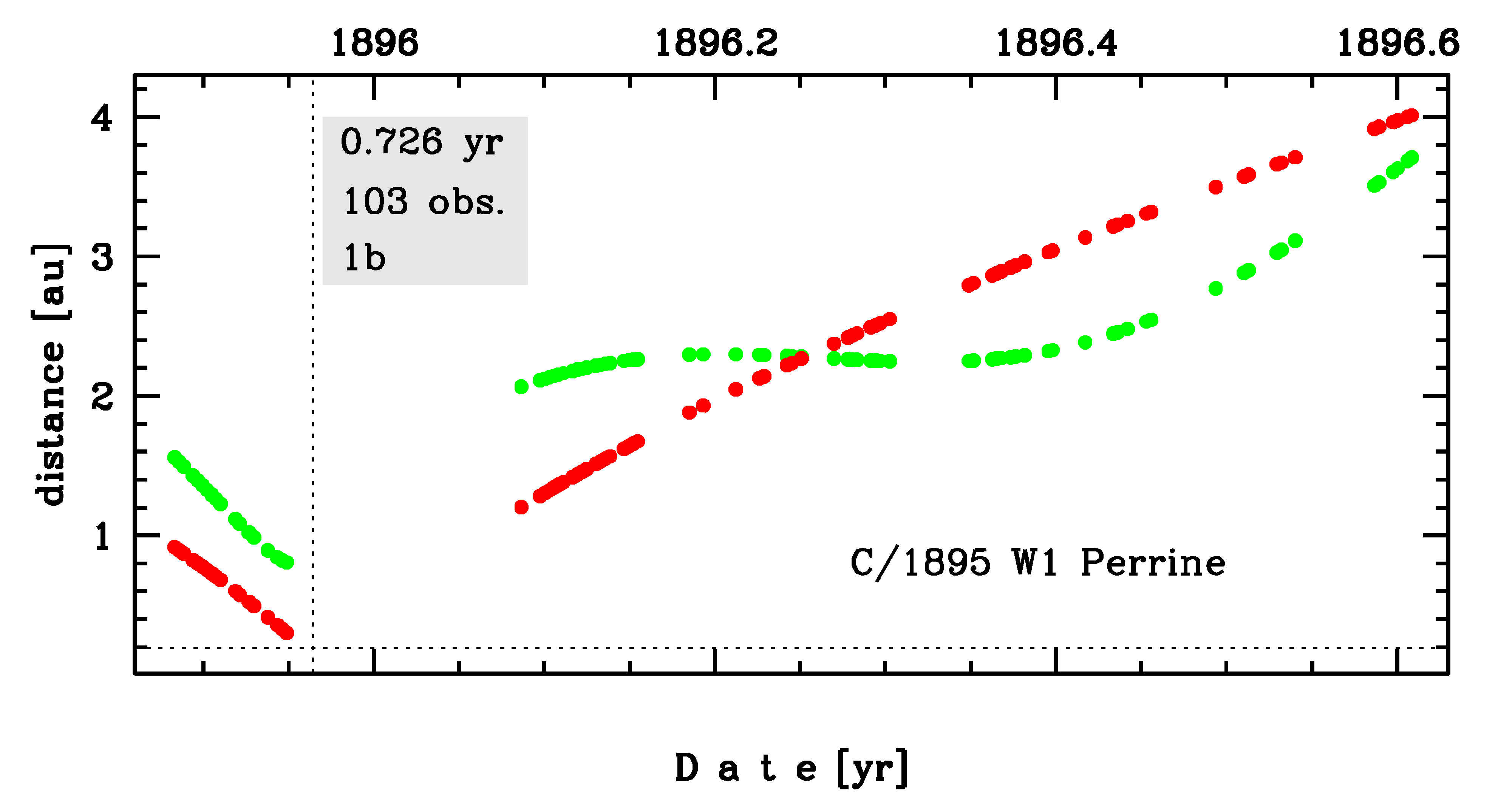C/1895 W1 Perrine
more info
C/1895 W1 was discovered on 17 November 1895 by Charles Dillon Perrine (Lick Observatory, California, USA), that is about a month before its perihelion passage, and it was last seen on 10 August 1896 [Kronk, Cometography: Volume 2].
This comet made its closest approach to the Earth on 14 December 1895 (0.794 au), that is 4 days before perihelion passage.
Solutions given here are based on data spanning over 0.726 yr in a range of heliocentric distances from 0.92 au through perihelion (0.192 au) to 4.01 au.
This comet suffers small planetary perturbations during its passage through the planetary system; these perturbations lead to a more tight future orbit with a semimajor axis of about 2,300 au (see future barycentric orbits).
See also Królikowska 2020.
This comet made its closest approach to the Earth on 14 December 1895 (0.794 au), that is 4 days before perihelion passage.
Solutions given here are based on data spanning over 0.726 yr in a range of heliocentric distances from 0.92 au through perihelion (0.192 au) to 4.01 au.
This comet suffers small planetary perturbations during its passage through the planetary system; these perturbations lead to a more tight future orbit with a semimajor axis of about 2,300 au (see future barycentric orbits).
See also Królikowska 2020.
| solution description | ||
|---|---|---|
| number of observations | 103 | |
| data interval | 1895 11 18 – 1896 08 10 | |
| data type | perihelion within the observation arc (FULL) | |
| data arc selection | entire data set (STD) | |
| range of heliocentric distances | 0.92 au – 0.19 au (perihelion) – 4.01 au | |
| detectability of NG effects in the comet's motion | comet with determinable NG~orbit | |
| type of model of motion | GR - gravitational orbit | |
| data weighting | YES | |
| number of residuals | 158 | |
| RMS [arcseconds] | 2.67 | |
| orbit quality class | 1b | |
| orbital elements (heliocentric ecliptic J2000) | ||
|---|---|---|
| Epoch | 1896 01 02 | |
| perihelion date | 1895 12 18.82896888 | ± 0.00012461 |
| perihelion distance [au] | 0.19197926 | ± 0.00000149 |
| eccentricity | 1.00004375 | ± 0.00000222 |
| argument of perihelion [°] | 272.666252 | ± 0.000471 |
| ascending node [°] | 321.955617 | ± 0.000606 |
| inclination [°] | 141.626546 | ± 0.000223 |
| reciprocal semi-major axis [10-6 au-1] | -227.87 | ± 11.57 |
